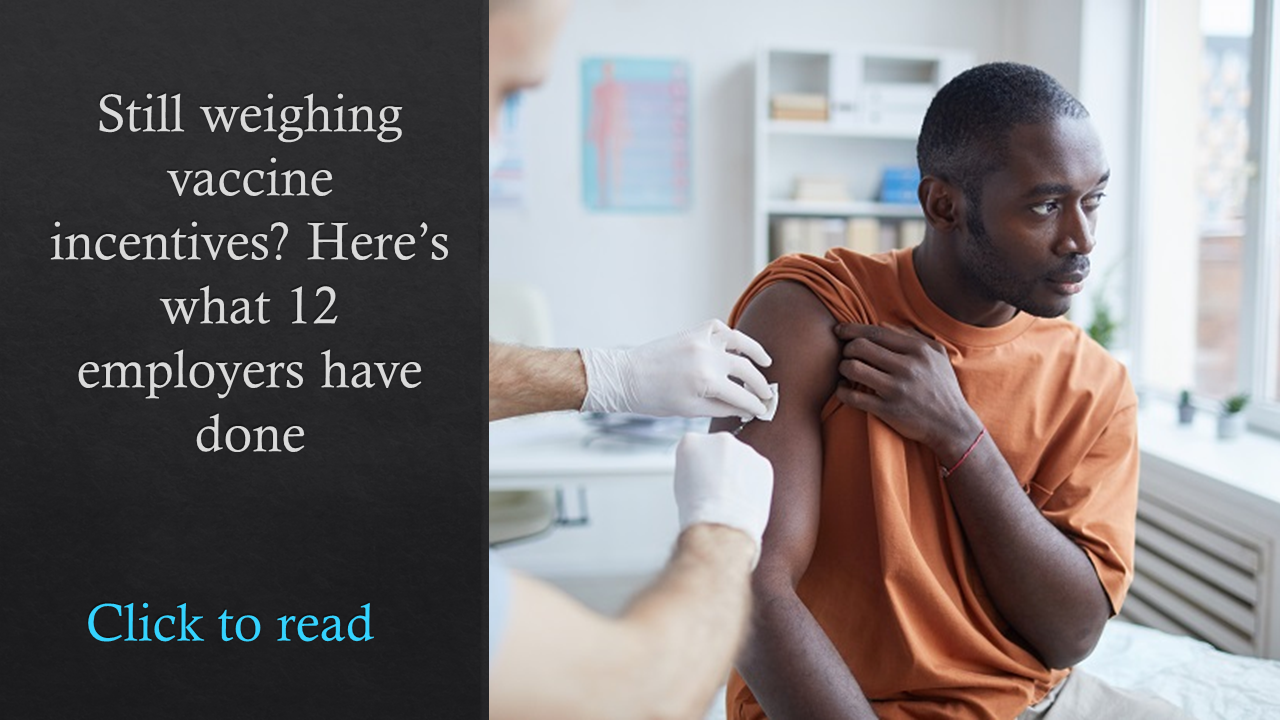Employers have been addressing severe illness, death and wrenching economic dislocation from the COVID-19 pandemic for over a year. As immunization rates rise and the pandemic recedes, employers should turn more attention to those who have had COVID-19 and continue to have disabling symptoms weeks and months later. This is known as “Long COVID,” or more formally Post-Acute SARS CoV2 (PASC). By treating this still-evolving condition in the same way as they do other chronic illnesses, employers can proactively address Long COVID-related disabilities.
Research on long-term effects in those who have had COVID-19 has shown widely disparate results. One report from a review of electronic medical records in Lancet Psychiatry showed that a third of those who have survived COVID-19 have residual neurologic symptoms, although this includes many with depression and anxiety that are common even among those who have never had COVID in these pandemic times. A recent report in the Journal of the American Medical Association reported that 4% of recovered healthcare workers had fatigue, 2% had shortness of breath and under 1% had difficulty concentrating eight months after infection. A study in Nature Medicine reported that 2.3% of those who had recovered from COVID continued to have symptoms 12 weeks later. Those who are older and have been hospitalized and been on mechanical ventilation seem to be most likely to have lingering symptoms, although even some young, healthy people have developed potentially disabling symptoms.
The most common symptoms attributed to Long COVID include difficulty concentrating, fatigue, shortness of breath, chest pain, rapid heart rate, loss of sense of smell and taste, anxiety and depression. This is similar to chronic symptoms seen in those who recovered from two related coronavirus infections, SARS (Severe Acute Respiratory Syndrome) and MERS (Middle East Respiratory Syndrome).
There are reports that COVID vaccination might help some patients suffering from Long COVID recover from some symptoms, although the biologic explanation for this is unclear. All those who have recovered from COVID, or those with Long COVID symptoms, are recommended to be vaccinated, but employers should not assume that vaccination will resolve ongoing symptoms.
See also: ‘Shocking’ number of leaders aren’t focused on COVID-19 vaccines
Employees facing continued symptoms after recovery from COVID might be unable to perform their usual work. The federal government provided expanded family and medical leave under the Families First Coronavirus Response Act (FFCRA) for employees of employers with less than 500 employees, although the required coverage expired at the end of 2020. Many states and some cities have also passed new requirements for sick pay and leaves during the pandemic, but the majority provide for only a few weeks of pay.
Employees can use available sick time or paid time off if they continue to have post-COVID symptoms, though many employees will have little or no available benefit, especially if they have already missed work due to an acute COVID infection. While applying for leave under the Family Medical Leave Act (FMLA) is an option, employees who choose this path will have no income replacement and the potential loss of job after 12 weeks.
Many with Long COVID are covered by the Americans with Disabilities Act Amendments Act (ADAAA), and employers must make reasonable accommodations to allow them to continue to perform their essential functions. Some employees could be eligible for leave as an accommodation under ADAAA. Such leave is unpaid, although benefits are retained, and their job is protected. The ADAAA requires that employers engage in an interactive process and review each employee’s circumstances individually. Employers can require information including medical reasons with an anticipated date of return to work. Companies are not required to provide indefinite leave under the ADAAA, and such leaves as an accommodation are rarely longer than 12-15 months.
Generalized symptoms such as fatigue may warrant accommodations intended to conserve an employee’s energy. Common solutions like reduced work schedules, alternating sedentary/light work tasks or the use of ergonomic equipment can serve as useful techniques to assist an employee’s return to the workplace. Neurological symptoms can also impact an employee’s decision-making ability, and cause memory deficits. Accommodations for these types of impairments and limitations are available but require additional steps to monitor the employee’s performance for quality.
Some employees will not be able to return to work because of symptoms of Long COVID. Lacking abnormal lung or heart tests, they could have difficulty obtaining short-term disability (STD) benefits. Disability insurers require objective medical evidence to support an approved leave of absence, and it’s hard to provide certification for symptoms like “brain fog” and “fatigue,” although these symptoms can be profoundly disabling. Disability insurers can require diagnostic testing such as neuropsychological evaluation and functional capacity evaluation to establish eligibility, and the considerable expense of such testing is the responsibility of the employee. Such testing might not be covered under employer-sponsored health insurance, and not all employers provide or offer STD coverage. A handful of jurisdictions, including California, Hawaii, Massachusetts, New Jersey, New York, Puerto Rico, Rhode Island and Washington offer short-term disability coverage. Connecticut will begin its program in 2022, and Oregon in 2023. These programs offer benefits for between 12-52 weeks.
The same qualification challenges face employees who seek long-term disability (LTD). Even those who are approved for LTD coverage are likely to be approved for a limited duration of 24 months under the “mental health or subjective symptoms” provisions of the policy. Employees who are permanently unable to perform their occupational duties can apply for Social Security Disability Insurance (SSDI), although the approval process is lengthy, and few will be granted benefits without objective medical tests to prove the disability. Many of those with post-infectious neurologic complications will need substantial help navigating the disability system, and some will likely face severe financial hardship.
Related: What do the new CDC mask guidelines mean for employers?
Additionally, people who suffer from a new disease syndrome that is poorly understood often find that clinicians, colleagues and family dismiss their symptoms. Symptoms that remain after people have recovered from other communicable diseases, including Epstein Barr Virus, Lyme Disease and SARS were initially dismissed by the medical community, but later determined to be part of well-recognized diseases. Patients whose complaints were not taken seriously often developed a cycle of worsening symptoms along with depression. Employers can offer an enormous sense of relief for those afflicted by Long COVID by providing empathy and acknowledging that their symptoms are “real.” Employers should treat patients who appear to have PASC with empathy and should not assume that they are malingering or exaggerating their symptoms.
 Moreover, it is important that employers, led by HR, be vigilant to avoid discrimination against those suffering from Long COVID. By relying on standard approaches of how to evaluate and support those with Long COVID symptoms, employers can eliminate attaching stigma to the condition. Also, by providing accommodations and following standard policies to avoid favoring some employees over others, they can maintain compliance.
Moreover, it is important that employers, led by HR, be vigilant to avoid discrimination against those suffering from Long COVID. By relying on standard approaches of how to evaluate and support those with Long COVID symptoms, employers can eliminate attaching stigma to the condition. Also, by providing accommodations and following standard policies to avoid favoring some employees over others, they can maintain compliance.
We are only beginning to understand the potential implications of Long COVID, and it’s possible that some of the worst symptoms will improve or resolve over time. HR departments can protect their employees and their companies by becoming familiar with Long COVID, treating employees complaining of these symptoms with empathy, and developing clear policies and procedures to address employees who complain of residual symptoms after recovering from COVID.



